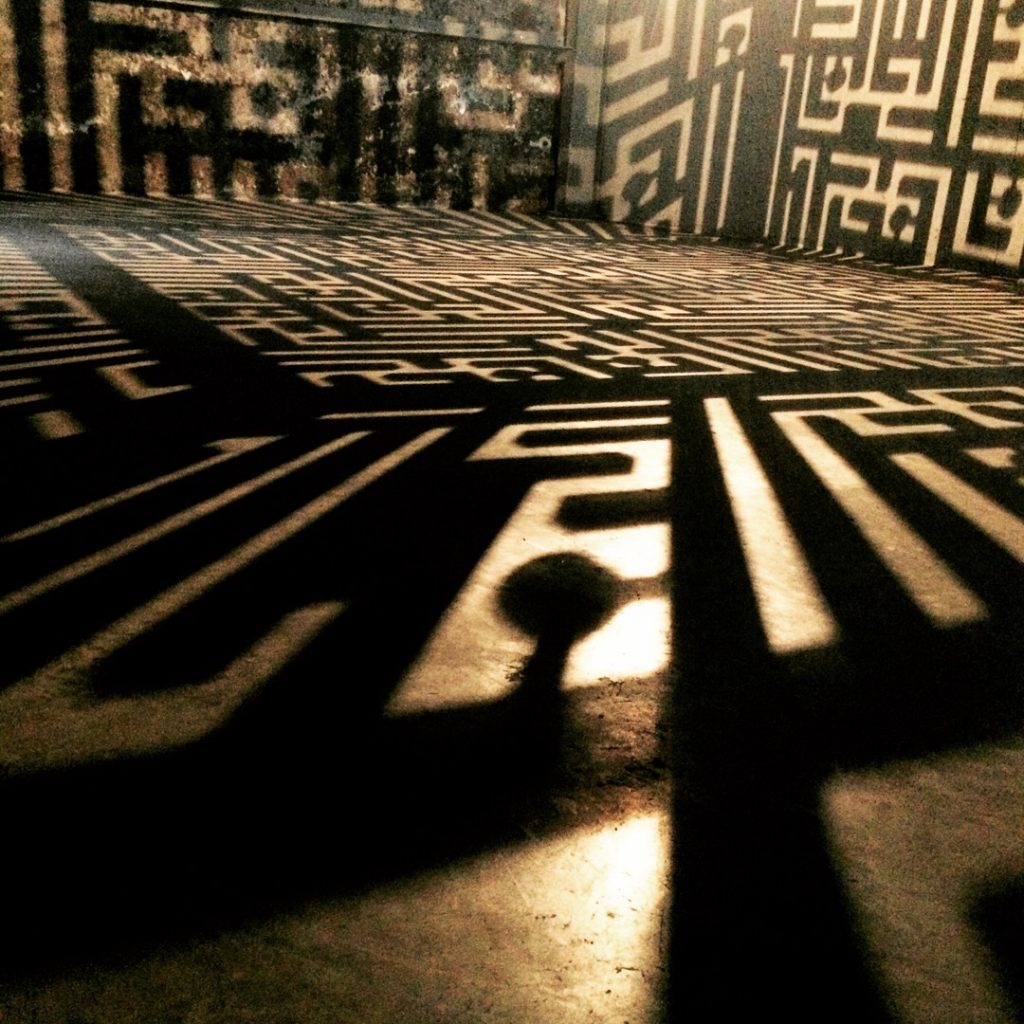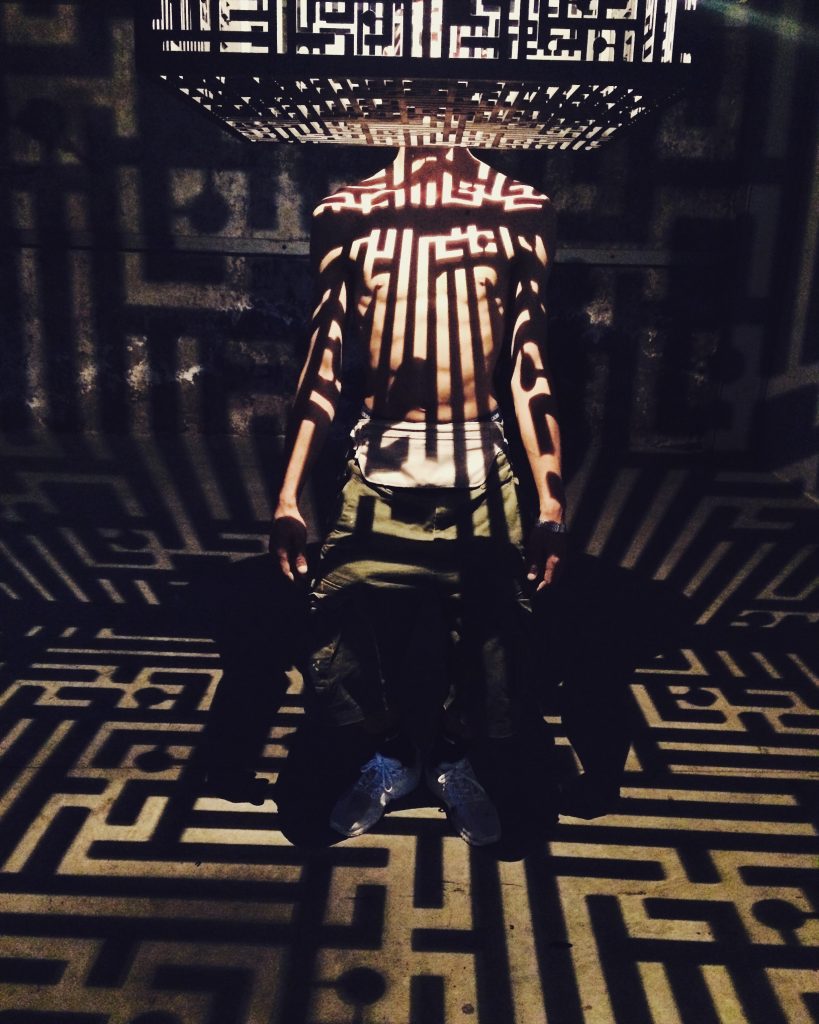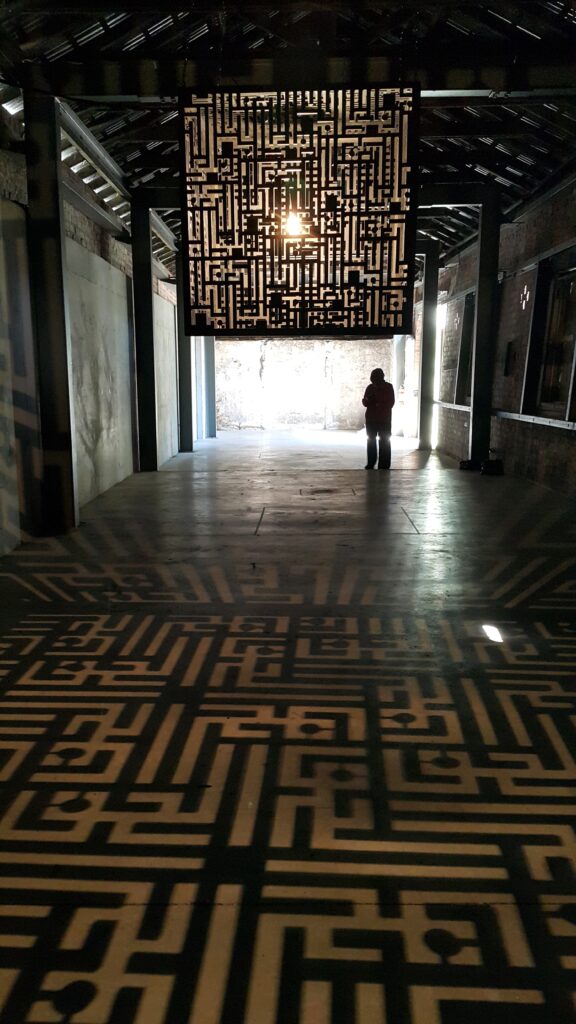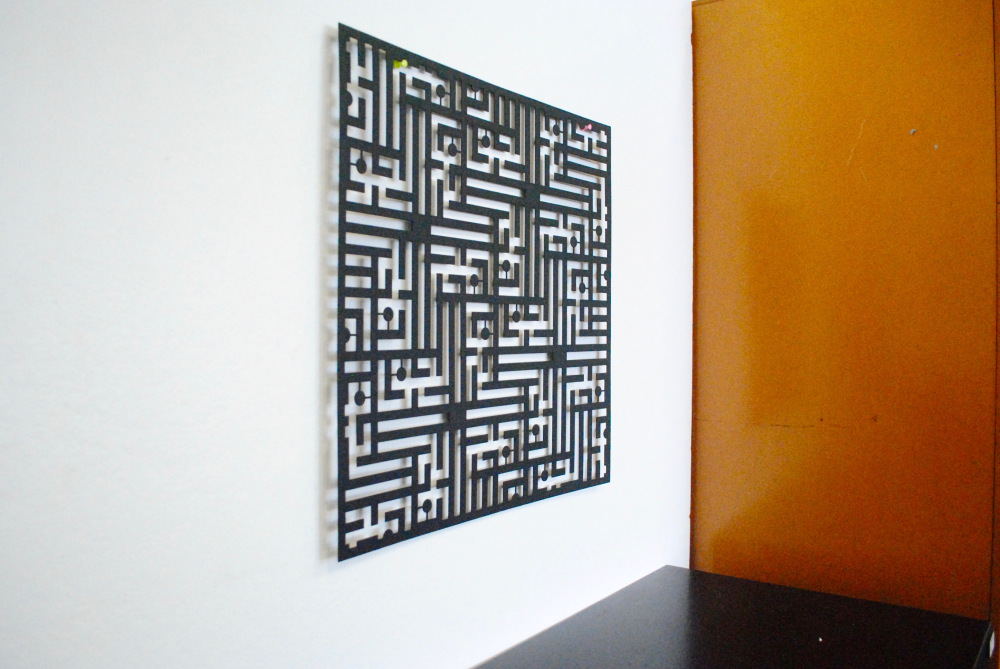
Al Haqq 50cmx50cm 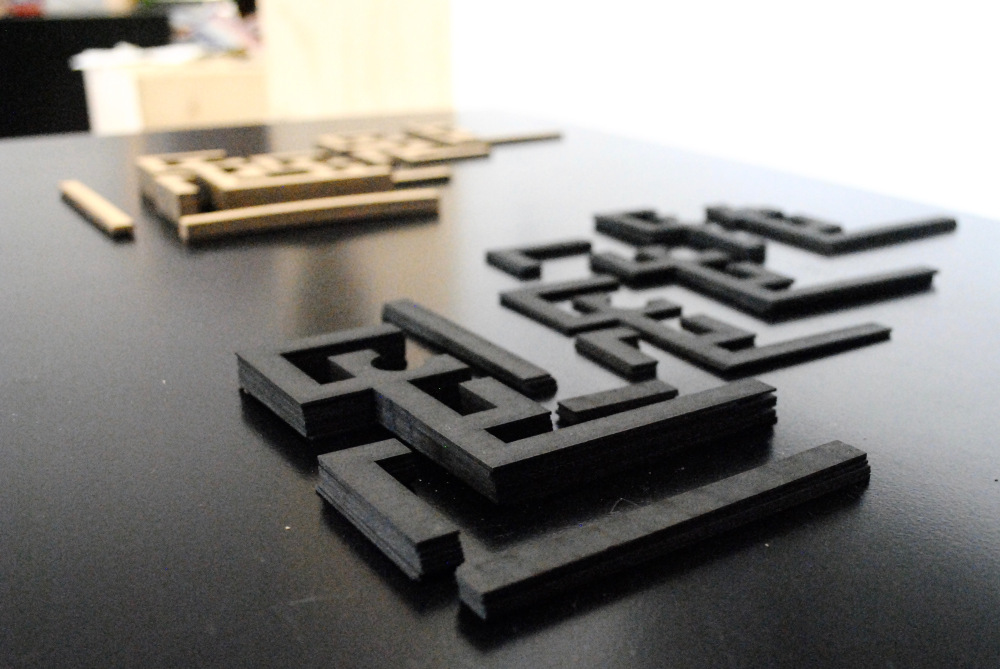
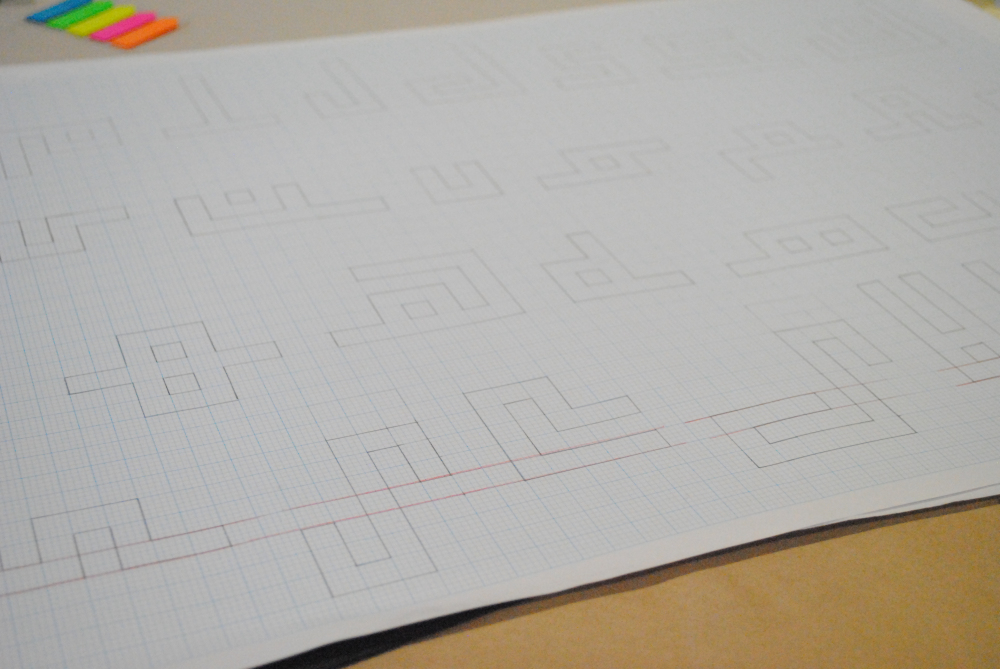
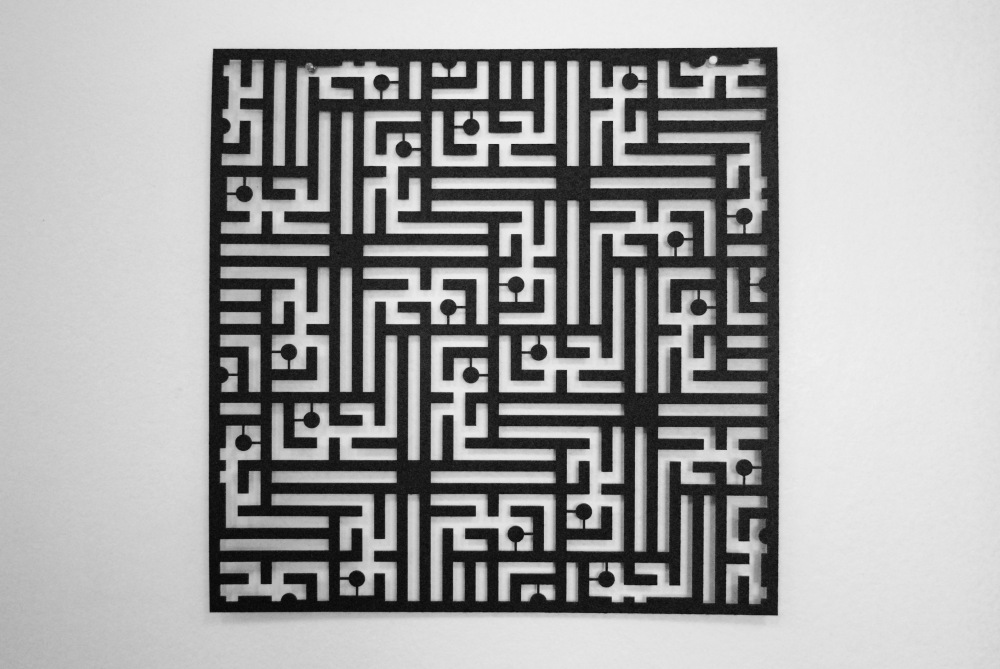
Al Haqq Black card 50cmx50cm
Artist Statement
“Know that wayfarers among the mystics and the saints possess four journeys: the first of them is the journey from creation to God; the second of them is the journey in God with God; the third journey is the opposite of the first because it is from God to creation with God; and the fourth is the opposite of the second because it is with God in creation . . . I have arranged my writing to correspond to their movement through lights and signs in four journeys and I have named it the ‘Transcendent Philosophy of the Four Journeys of the Intellect’” – Mulla Sadra
Sadr al-Din Muhammad al-Shirazi, known as Mulla Sadra is a 17th century Persian philosopher. His doctrine of existence is a significant contribution to Islamic philosophy. His most famous work is the ‘Transcendent Philosophy of the Four Journeys of the Intellect’, (Al- Hikma Al-Muta’aliya Fil-Asfar Al- Aqliyya Al-Arba’a). As part of my research I began by writing these four journeys in Kufic Arabic, one of the earliest forms of writing in Islamic history. Kufic Arabic was used to copy the Quran, it was also used for ornamental purposes in architecture and can be seen on everyday objects such as coins. It is a form of writing that incorporates geometry and repetition, making it a visual and artistic conversation.
The use of Kufic texts and the act of placing writing and patterns in the visual world became a visual and artistic gesture mirroring the metaphysical and spiritual aspects in everyday life. In the Islamic world God is known only through revelation (wahi) and signs (ayat), writing the speech and signs became an important means of communication, a visual gesture of God’s presence. For Asfar I aim to present the importance and significance of writing in the Islamic world, the journey of being in the Sufi practice, and how the movement of light corresponds to the movement of the saints.

